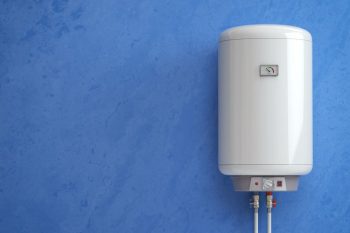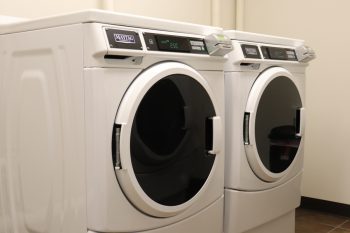
The dryer timer switch is an integral component of your household appliance. When functioning correctly, it ensures that the dryer operates within the set time and temperature parameters. However, if this switch malfunctions, it can cause the dryer to run for too long, not heat properly, or shut off abruptly. This article provides a comprehensive guide on how to test a dryer timer switch.
To test a dryer timer switch, first disconnect the dryer from the power source. Locate the timer switch, usually found on the top or rear of the control panel. Access the timer motor by removing the back panel or lifting the control panel. Using a multimeter set to Rx1, test the timer by touching one probe to the terminal where you removed the wire and the second probe to any other contact. Compare the readings to the wiring diagram. If the readings don’t match the diagram or if the timer motor is not within the specified Ohms range, the timer switch may need to be replaced.
What is a Dryer Timer Switch?
A dryer timer switch is a device that controls various functions of a dryer, such as when the dryer turns off, how long the heater stays on, and the duration of the cool-down cycle. It is usually found on the top or rear of the control panel and is the largest dial with several numbers.
Tools Required to Test a Dryer Timer Switch
To test a dryer timer switch, you will need a multimeter, a Phillips screwdriver, a small flathead screwdriver, and a wiring diagram which is typically found inside the dryer or in the user manual.
Step-by-Step Guide to Test a Dryer Timer Switch
- Disconnect the power: Unplug the dryer from the power source and turn off the power from the breaker box or fuse box.
- Locate the timer: The dryer timer is typically found on the top or rear of the control panel. It is usually the largest dial with several numbers.
- Access the timer motor: Remove the back panel of the dryer or lift the control panel to access the timer motor.
- Find the wiring diagram: This diagram will tell you the correct Ohms range and which contacts should be open or closed.
- Set the multimeter: Set the multimeter to Rx1 and zero it by touching the two probes together. Set the dial on the multimeter to read “0”.
- Test the timer: Touch one probe to the terminal where you removed the wire and the second probe to any other contact on the timer. Check for continuity and compare the readings to the wiring diagram.
- Test the timer motor: Turn the timer to “OFF”, which should make the motor contacts open. In any other position, the contacts on the dryer timer should be open. If the timer motor is not working correctly, you may need to replace it.
If the test results do not match the wiring diagram or if the timer motor is not within the specified Ohms range, you may need to replace the timer.
Replacing a Faulty Dryer Timer Switch
If you’ve determined that your dryer timer switch is faulty, you will need to replace it. Here are the steps to do so:
- Disconnect the power: Unplug the dryer from the power source and, if applicable, turn the gas back on.
- Remove the control knob: Pull the timer control knob off the timer stem on the front of the control panel.
- Remove the back panel: Depending on your dryer model, you may need to remove screws or clips to detach the back panel or control console.
- Remove the timer: Disconnect the wires connected to the timer terminals.
- Install the new timer: Attach the new timer to the mounting bracket and secure it with screws or clips.
- Reconnect the wires: Reassemble the wires to the timer terminals.
- Reassemble the dryer: Replace the back panel or control console and secure it with screws or clips.
- Restore power: Plug the dryer back in and, if applicable, turn the gas back on.
Remember to always consult the manufacturer’s guidelines and follow any specific instructions for your dryer model.
In conclusion, testing a dryer timer switch is a relatively straightforward process that can be done with a few tools and some patience. By following the steps outlined in this article, you can diagnose and possibly fix any issues with your dryer timer switch. However, if you’re not comfortable performing these tasks yourself, consider hiring a professional appliance repair technician.
Frequently Asked Questions
What is a multimeter and where can I buy one?
A multimeter is a tool that measures electrical properties like voltage, current, and resistance. It is essential for testing various components of your dryer including the timer switch. They are available at any home improvement or electronics store, or online on websites like Amazon.
How do I read a wiring diagram?
A wiring diagram is a visual representation of the electrical circuits in your dryer. It shows how the electrical wires are interconnected and can also show where fixtures and components may be connected to the system. To read a wiring diagram, you’ll need to understand the symbols that represent the various components and the lines that represent the wires. It’s a good idea to refer to the manual of your specific appliance for more detailed instructions.
Why do I need to disconnect the power before testing the dryer timer switch?
Disconnecting the power is a crucial safety step when working on any electrical appliance. This prevents the risk of electric shock, which could lead to serious injury.
What should I do if I can’t find the wiring diagram for my dryer?
If you can’t find the wiring diagram inside your dryer or in the user manual, you can try searching online using the model number of your dryer. Many manufacturers provide digital copies of their manuals online. If all else fails, consider contacting the manufacturer’s customer service for help.
What if my dryer model doesn’t have a timer switch?
Some newer models of dryers use digital controls instead of a mechanical timer switch. If your dryer has a digital control, the troubleshooting process may be different, and you may need to refer to the manufacturer’s guide or contact a professional for help.












